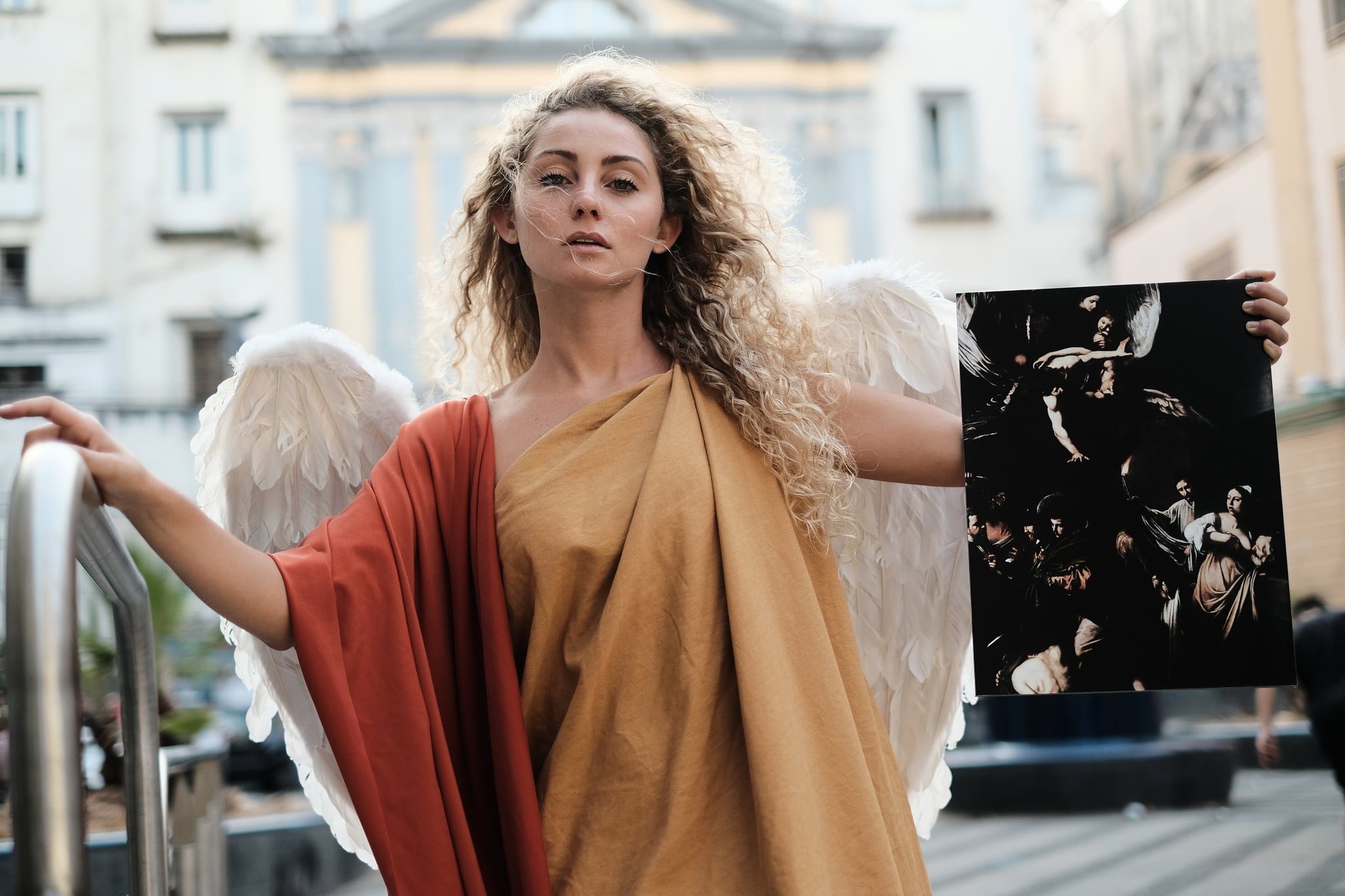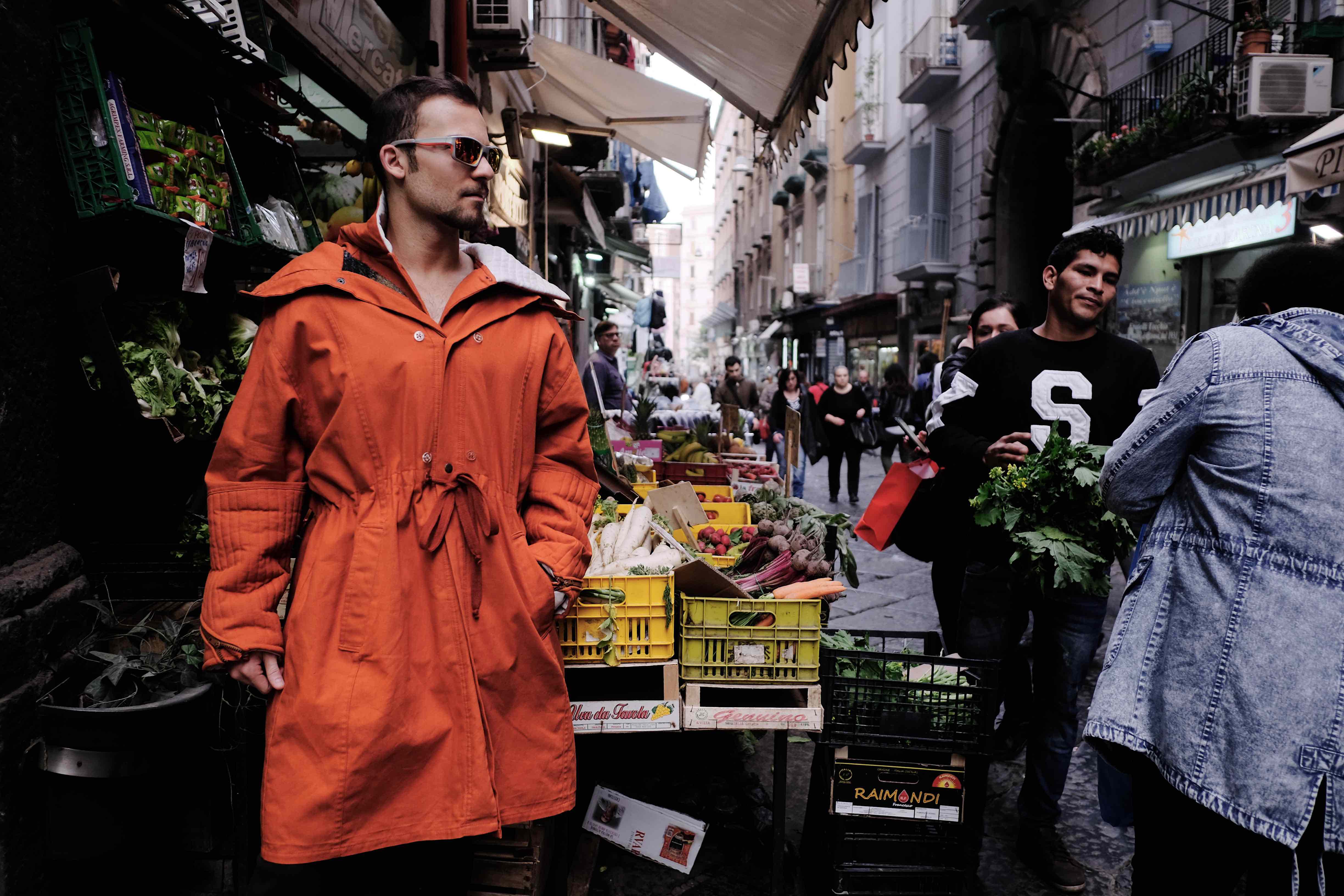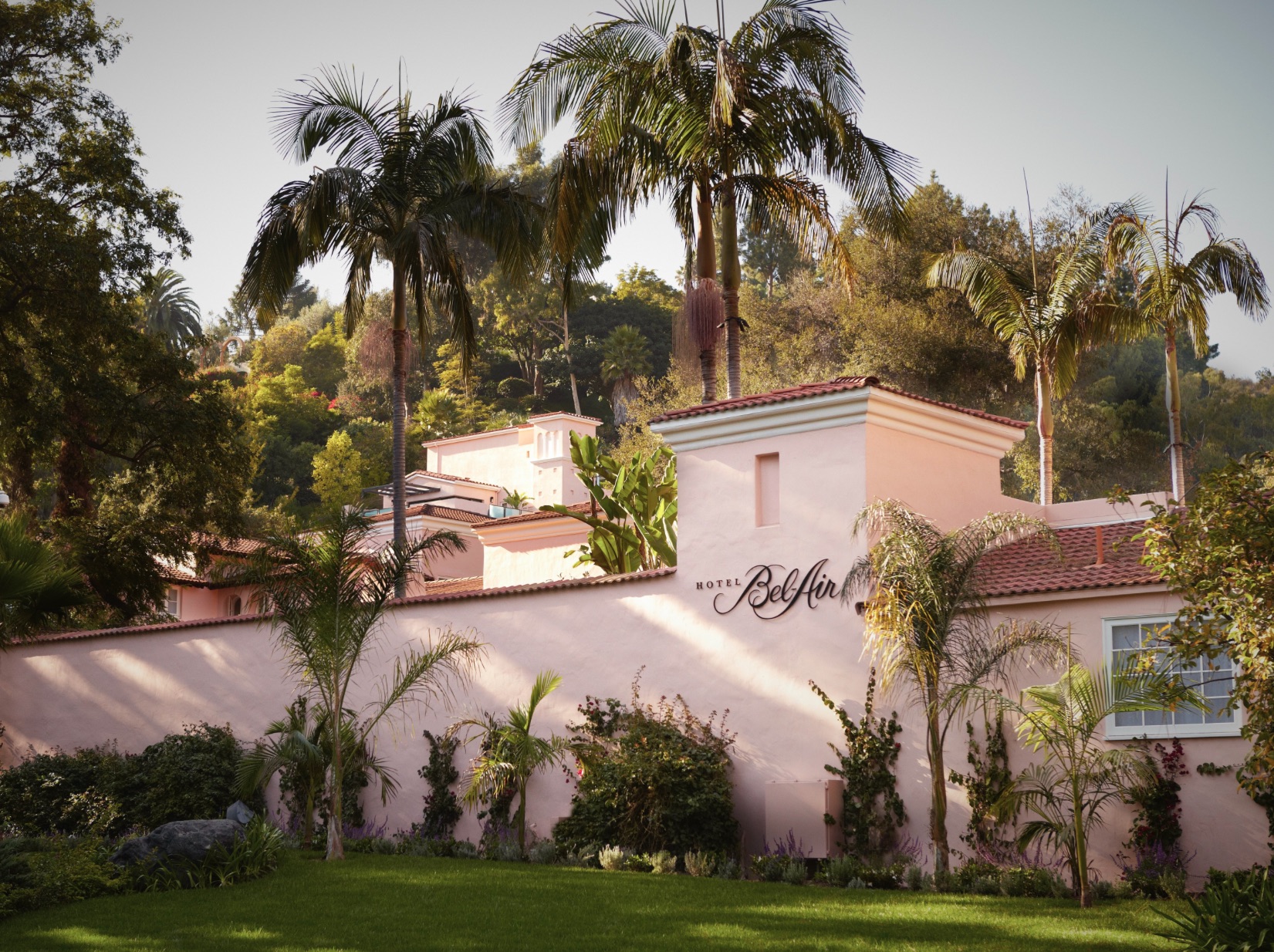Napoli fashion on the road presents the new stage, through a reportage dedicated to art and mysticism, in the Quartieri Spagnoli, a pulsating area of frenetic liveliness in the heart of the capital of Campania. The beautiful model presents herself in a mystical angel outfit, illuminating the streets of the neighborhood with her beauty, to the astonishment of passers-by. A beautiful and radiant angel, symbol of strength and courage, of mercy, of protection of the city, of contact between heaven and earth, of hope and love.
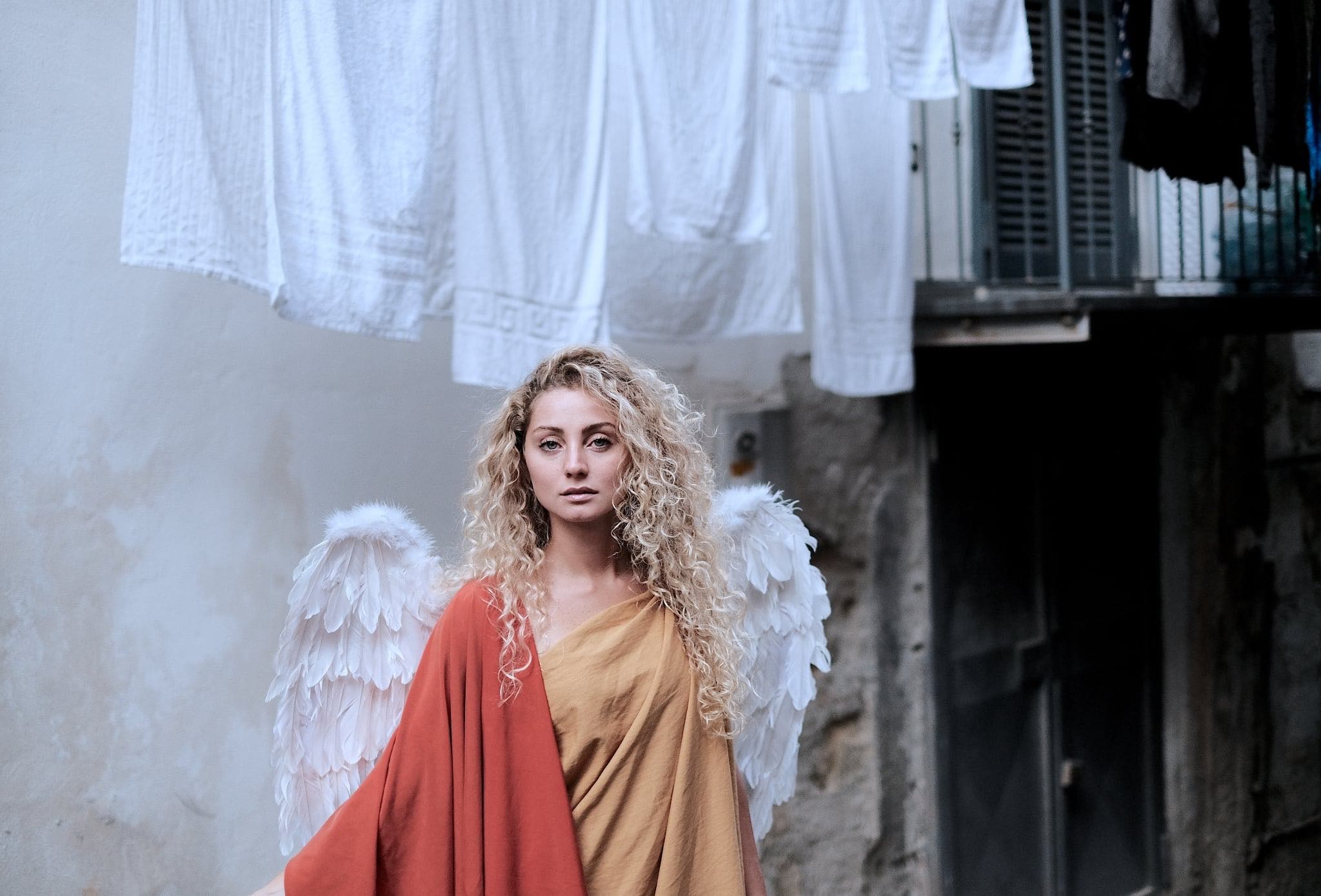
The angel, a figure that Napoli fashion on the road wanted to correlate also to the art world, thanks to the celebration of two extraordinary painters who lived in Naples in the 17th century, and who included the angels among their masterpieces: Michelangelo Merisi said “Il Caravaggio”, and Jusepe de Ribera called “the Spaniard“. Ribera, was the artist capable of painting the soul of Naples, the city where he moved in 1616, to the house of the elderly painter of the Quartieri Spagnoli, Giovanni Bernardino Azzolino.

In that year he painted numerous masterpieces including “St. Jerome and the angel“, currently kept in the Museo di Capodimonte in Naples and today in a copy on display to the photographer’s shots, in one of the two panels used by the model, among the streets of the Quartieri Spagnoli. The Panels, thus depicting the work of Ribera, and the other more famous “The Seven Works of Mercy” (1616-17) by Maestro Caravaggio, preserved in the Church of the Pio Monte della Misericordia in Naples.
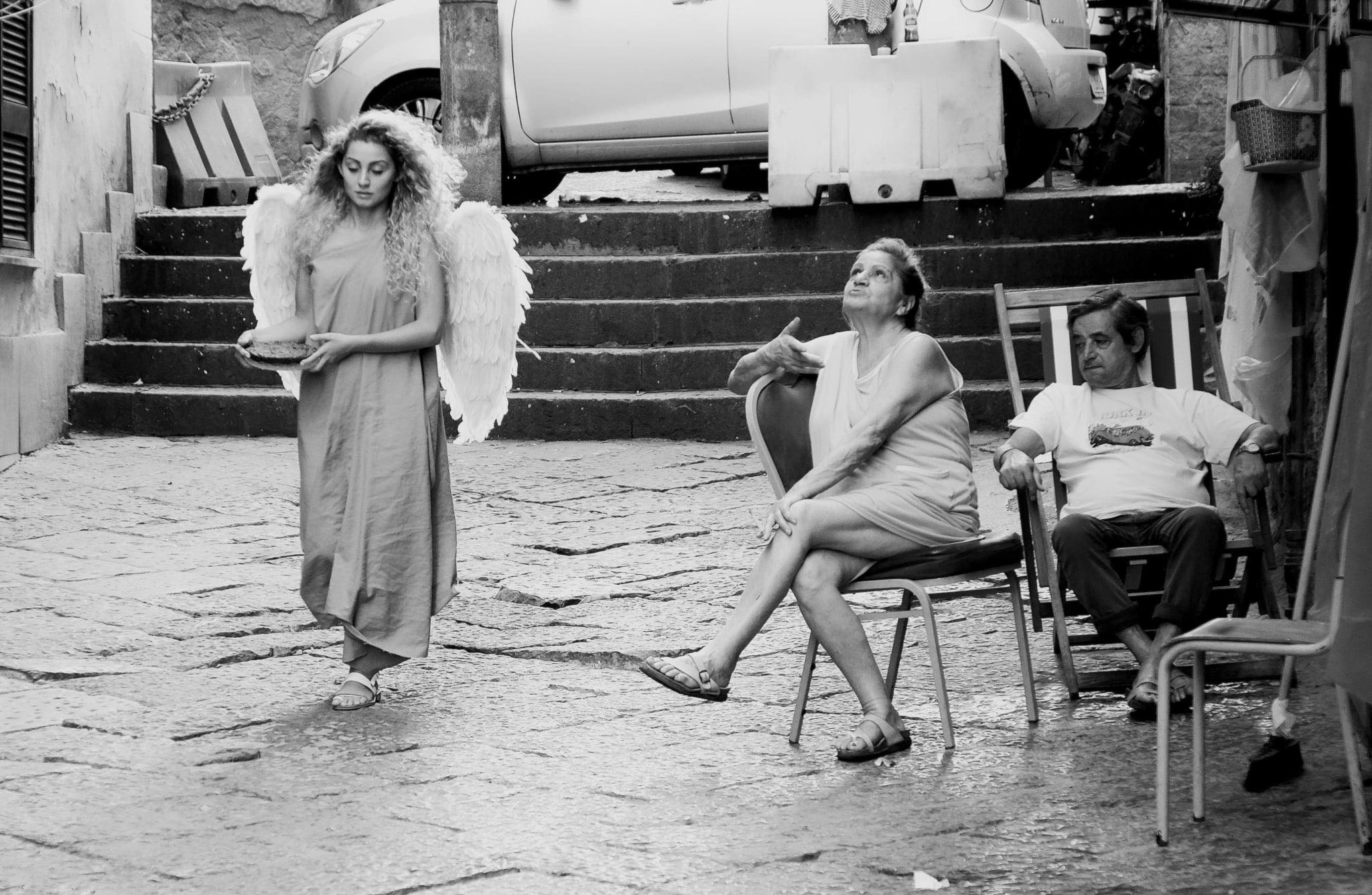
Works, both characterized by the presence of angels. In the upper part we find the figure of the Madonna represented surprisingly as a woman facing the balcony in an alleyway in Naples, holding the baby Jesus leaning over to observe what happens in the street; of extraordinary beauty is the presence of two angels who embrace alluding to the theme of brotherhood and below we appreciate the scenes dedicated to the seven works of mercy. The painter adopted by the Neapolitan city highlights the spontaneous mercy of the Neapolitan people, thus giving the canvas a further symbolic meaning of homage to Neapolitan citizenship.

Symbolisms that continue as already mentioned, with the presence of the painting “St. Jerome and the angel“ by Ribera, which introduces the gastronomic theme of the stage. In fact, the model exhibits in her hands the “Pietra di San Girolamo”, (“Stone of St. Jerome”), a traditional dessert from the area of the sixteenth century. A delicacy prepared for the occasion by a well-known and ancient Campania pastry, Pasticceria Pelosi, which this year celebrates its 100th anniversary in the historic premises of the ancient Convent of San Francesco d’Assisi in Aversa.
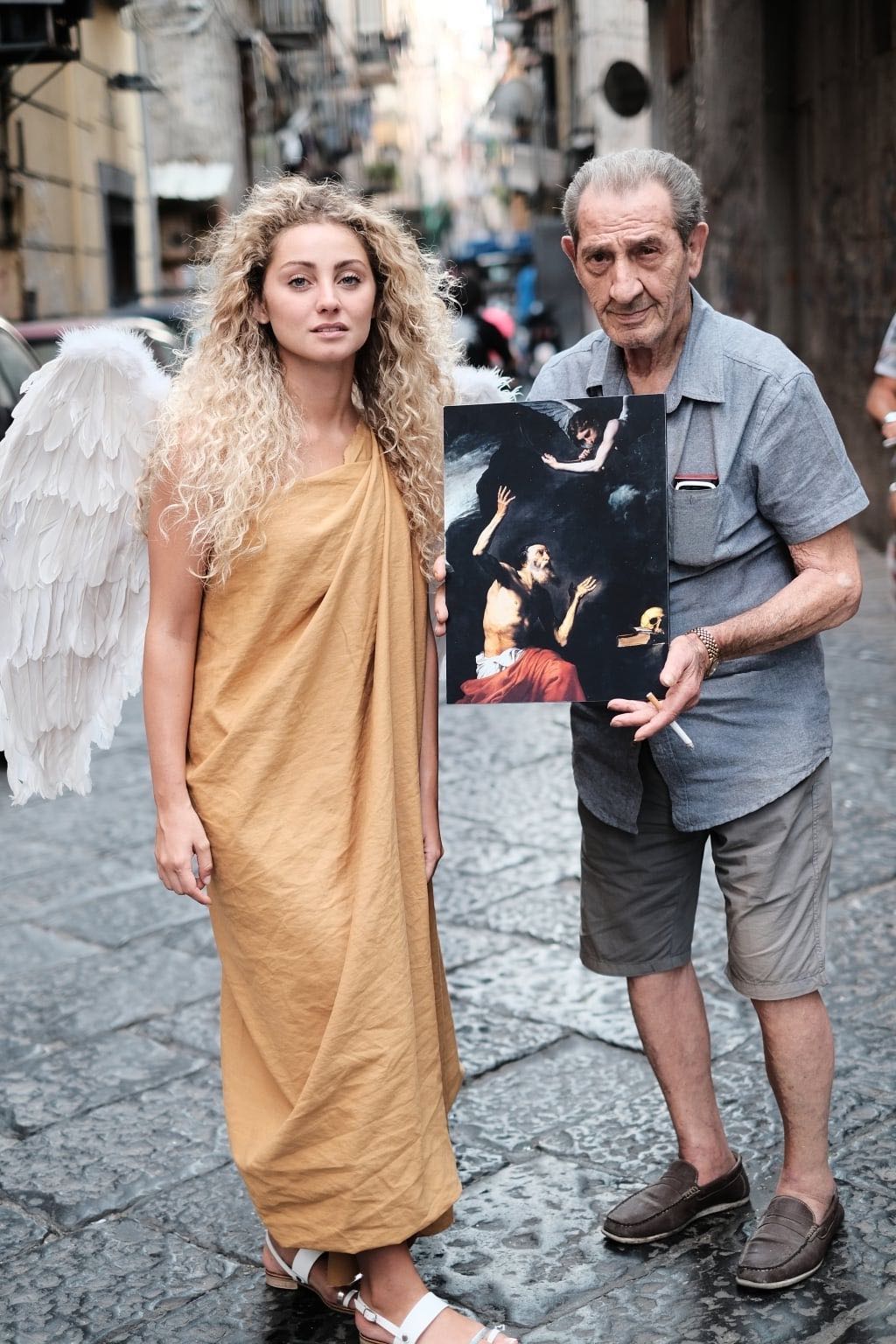
Excellent Aversana confectionery reality, which for many decades has jealously kept the secret of the recipe for the “Pietra di San Girolamo”, developed in the sixteenth century by the Poor Clares of the Second Order of St. Clare and St. Francis. A mixture of almonds, sugar and cocoa, in the shape of a stone, to commemorate St. Jerome, which thus seems to bear witness to the chronicles of the time, penitent, was tortured with a stone.
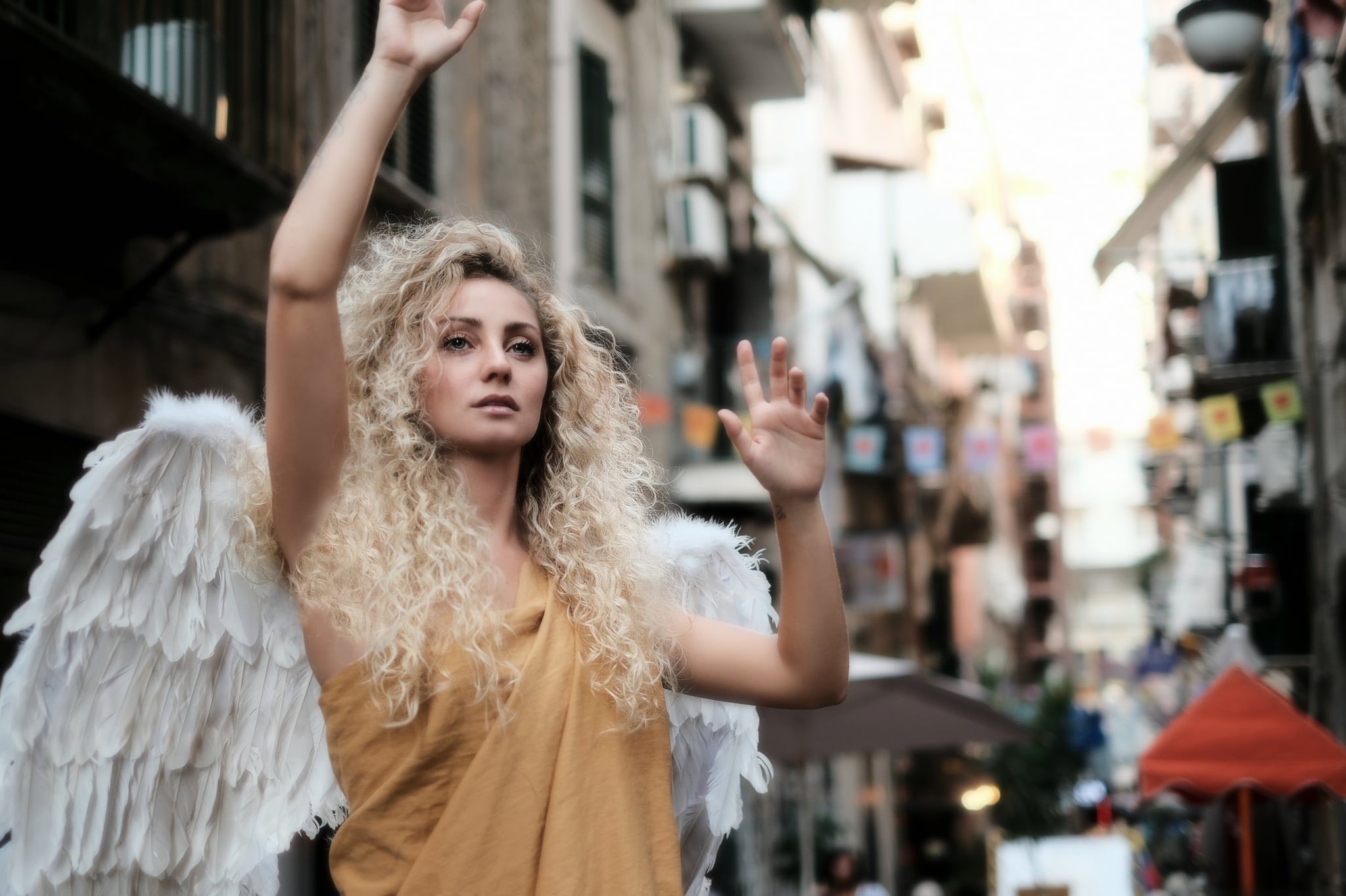
A sweet, therefore, with mystical origins and unique characteristics, incredibly crumbly on the palate, despite appearing hard to the touch. The great respect for tradition and for the centuries-old family business, the extremely rigorous craftsmanship with quality materials, handed down from generation to generation, represent the distinctive feature of the historic Pasticceria Pelosi, making it a sure gastronomic reference in the Campania region.
The artistic director of Napoli fashion on the road, Cristiano Luchini, fortunate territorial marketing project close to the fourth year of activity, declared in a note – “I believe that with this particular stage of the project, the whole team of the company Curtis&Moore Italia, managed to complete something special, unique, never experienced before “. Continues, the director Luchini – “Through a careful synthesis of mysticism and symbolism, art, image and gastronomy, we have proposed to tell Naples, in an even more innovative way. We have taken care of everything in detail. I would also like to underline the choice of particular color, ocher yellow, of the garments that have cloaked our beautiful model “. “A chromatism that in line with the eminent figure of St. Jerome for the Church, symbolizes intelligence, knowledge and wisdom; tools which the Neapolitan people have and which should never tire of using …. It is also necessary to mention the extraordinary photographic work by the director of photography “iPhotox” and all the staff of professionals, operators and editors, for the video area. We are proud of what we have done “.
